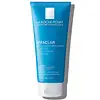What's inside
What's inside
 Key Ingredients
Key Ingredients

 Benefits
Benefits

 Concerns
Concerns

 Ingredients Side-by-side
Ingredients Side-by-side

Water
Skin ConditioningKaolin
AbrasiveArgilla
AbrasivePropanediol
SolventPanthenol
Skin ConditioningGlycerin
HumectantCaprylic/Capric Triglyceride
MaskingCI 77891
Cosmetic ColorantTitanium Dioxide
Cosmetic ColorantCetearyl Alcohol
EmollientZea Mays Starch
AbsorbentCellulose
AbsorbentCeteareth-20
CleansingLecithin
EmollientCaprylyl Glycol
EmollientCitric Acid
BufferingXanthan Gum
EmulsifyingTocopherol
AntioxidantPhenoxyethanol
PreservativeParfum
MaskingSulfur 5%
AntiseborrhoeicWater
Skin ConditioningKaolin
AbrasiveIsopentyldiol
HumectantBentonite
AbsorbentPeat Extract
Skin ConditioningZinc Oxide
Cosmetic ColorantPropanediol
SolventGlycerin
HumectantCetearyl Alcohol
EmollientCetyl Alcohol
EmollientCetyl Ricinoleate
EmollientGlyceryl Stearate Se
EmulsifyingUrea
BufferingYeast Amino Acids
HumectantTrehalose
HumectantInositol
HumectantTaurine
BufferingBetaine
HumectantAllantoin
Skin ConditioningSalicylic Acid
MaskingDipotassium Glycyrrhizate
HumectantZingiber Officinale Root Extract
MaskingBisabolol
MaskingEucalyptus Globulus Leaf Oil
PerfumingHydroxyacetophenone
AntioxidantEthylhexylglycerin
Skin ConditioningCoco-Glucoside
CleansingAcacia Senegal Gum
MaskingXanthan Gum
EmulsifyingCarbomer
Emulsion StabilisingTetrasodium Glutamate Diacetate
Citric Acid
BufferingDehydroacetic Acid
PreservativeChlorphenesin
AntimicrobialSulfur 5%, Water, Kaolin, Isopentyldiol, Bentonite, Peat Extract, Zinc Oxide, Propanediol, Glycerin, Cetearyl Alcohol, Cetyl Alcohol, Cetyl Ricinoleate, Glyceryl Stearate Se, Urea, Yeast Amino Acids, Trehalose, Inositol, Taurine, Betaine, Allantoin, Salicylic Acid, Dipotassium Glycyrrhizate, Zingiber Officinale Root Extract, Bisabolol, Eucalyptus Globulus Leaf Oil, Hydroxyacetophenone, Ethylhexylglycerin, Coco-Glucoside, Acacia Senegal Gum, Xanthan Gum, Carbomer, Tetrasodium Glutamate Diacetate, Citric Acid, Dehydroacetic Acid, Chlorphenesin
Ingredients Explained
These ingredients are found in both products.
Ingredients higher up in an ingredient list are typically present in a larger amount.
Cetearyl alcohol is a mixture of two fatty alcohols: cetyl alcohol and stearyl alcohol. It is mainly used as an emulsifier. Emulsifiers help prevent the separation of oils and products. Due to its composition, it can also be used to thicken a product or help create foam.
Cetearyl alcohol is an emollient. Emollients help soothe and hydrate the skin by trapping moisture.
Studies show Cetearyl alcohol is non-toxic and non-irritating. The FDA allows products labeled "alcohol-free" to have fatty alcohols.
This ingredient is usually derived from plant oils such as palm, vegetable, or coconut oils. There is debate on whether this ingredient will cause acne.
Due to the fatty acid base, this ingredient may not be Malassezia folliculitis safe.
Learn more about Cetearyl AlcoholCitric Acid is an alpha hydroxy acid (AHA) naturally found in citrus fruits like oranges, lemons, and limes.
Like other AHAs, citric acid can exfoliate skin by breaking down the bonds that hold dead skin cells together. This helps reveal smoother and brighter skin underneath.
However, this exfoliating effect only happens at high concentrations (20%) which can be hard to find in cosmetic products.
Due to this, citric acid is usually included in small amounts as a pH adjuster. This helps keep products slightly more acidic and compatible with skin's natural pH.
In skincare formulas, citric acid can:
While it can provide some skin benefits, research shows lactic acid and glycolic acid are generally more effective and less irritating exfoliants.
Most citric acid used in skincare today is made by fermenting sugars (usually from molasses). This synthetic version is identical to the natural citrus form but easier to stabilize and use in formulations.
Read more about some other popular AHA's here:
Learn more about Citric AcidGlycerin is already naturally found in your skin. It helps moisturize and protect your skin.
A study from 2016 found glycerin to be more effective as a humectant than AHAs and hyaluronic acid.
As a humectant, it helps the skin stay hydrated by pulling moisture to your skin. The low molecular weight of glycerin allows it to pull moisture into the deeper layers of your skin.
Hydrated skin improves your skin barrier; Your skin barrier helps protect against irritants and bacteria.
Glycerin has also been found to have antimicrobial and antiviral properties. Due to these properties, glycerin is often used in wound and burn treatments.
In cosmetics, glycerin is usually derived from plants such as soybean or palm. However, it can also be sourced from animals, such as tallow or animal fat.
This ingredient is organic, colorless, odorless, and non-toxic.
Glycerin is the name for this ingredient in American English. British English uses Glycerol/Glycerine.
Learn more about GlycerinKaolin is a clay. It is used for oil control and to help minimize pores. Like other clays, kaolin has the ability to absorb excess sebum or oil. This can help clean out pores and mattify the skin.
Some types of kaolin may have exfoliating properties. When water is added to kaolin, it becomes a paste with small abrasive particles.
Most kaolin is a white color, but may be pink/orange/red depending on where it comes from.
The name 'kaolin' comes from a Chinese village named 'Gaoling'. Kaolin clay comes from rocks rich in kaolinite. Kaolinite, the mineral, has a silicate layered structure. Kaolinite is formed from chemical weathering of aluminum siilicate minerals.
Besides skincare, kaolin is commonly used to make glossy paper, in ceramics, toothpaste, and as medicine to soothe stomach issues.
Learn more about KaolinPropanediol is an all-star ingredient. It softens, hydrates, and smooths the skin.
It’s often used to:
Propanediol is not likely to cause sensitivity and considered safe to use. It is derived from corn or petroleum with a clear color and no scent.
Learn more about PropanediolWater. It's the most common cosmetic ingredient of all. You'll usually see it at the top of ingredient lists, meaning that it makes up the largest part of the product.
So why is it so popular? Water most often acts as a solvent - this means that it helps dissolve other ingredients into the formulation.
You'll also recognize water as that liquid we all need to stay alive. If you see this, drink a glass of water. Stay hydrated!
Learn more about WaterXanthan gum is used as a stabilizer and thickener within cosmetic products. It helps give products a sticky, thick feeling - preventing them from being too runny.
On the technical side of things, xanthan gum is a polysaccharide - a combination consisting of multiple sugar molecules bonded together.
Xanthan gum is a pretty common and great ingredient. It is a natural, non-toxic, non-irritating ingredient that is also commonly used in food products.
Learn more about Xanthan Gum